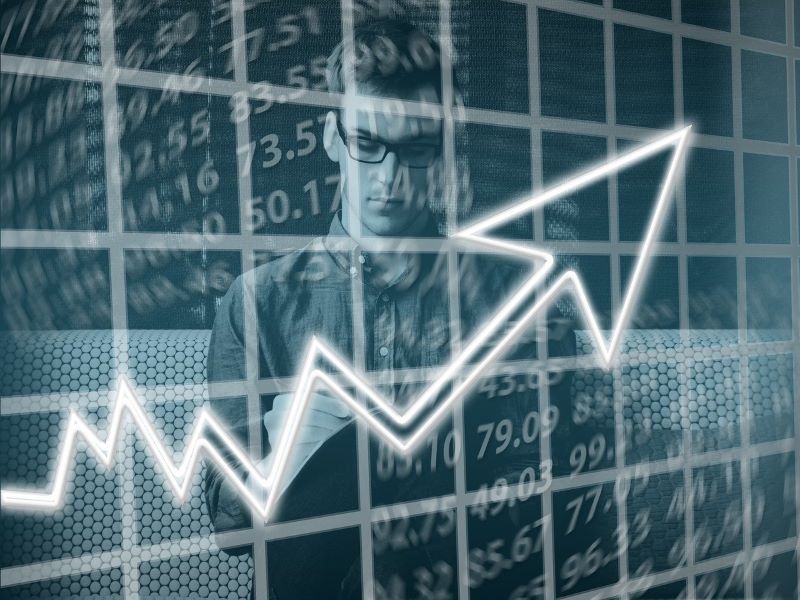 GDP
GDP Kolkata/UNI: The country's gross domestic product (GDP) for the full year (FY22) would grow by 8.8 percent, 0.5 percentage point down than the earlier estimate, a State Bank of India research report said on Friday.
The SBI's economic research department (ERD) had in an earlier report estimated the full year's GDP to be 9.3 percent. India's GDP – the total value of goods and services produced in the country - is likely to go up by 5.8 percent in the October-December quarter of the current fiscal, according to the research report- Ecowrap – authored by the bank's Group Chief Economic Adviser Soumya Kanti Ghosh.
Regarding the downgrading of the growth projections for the full fiscal, the report factored in the fatigue due to the “continued fight against the chimeric virus and the spillover of ripple effects intermingling in somewhat indecipherable ways.
“With this, the real GDP will be around Rs 2.35 lakh crore/1.6 percent more than the pre-pandemic FY20 real GDP of Rs 145.69 lakh crore,” said Ghosh. India recorded a GDP growth of 8.4 percent in the second quarter of 2021-22.
"As per SBI Nowcasting Model, the GDP growth forecast for Q3 FY22 would be 5.8 percent, with a downward bias. The full year (FY22) GDP growth is now revised downwards to 8.8 percent", the report said.
The Nowcasting Model is based on 41 high-frequency indicators associated with industry activities, service activities, and the global economy. It used the dynamic factor model to estimate the common or representative or latent factor of all the 41 high-frequency indicators from Q4 of FY13 to Q3 of FY22.
“This slower growth momentum reconfirms recent assertion that incipient growth recovery needs to be supported by accommodative policy longer than anticipated. “We thus expect liquidity normalization may be delayed. This could have a further softening impact on G-sec yields from current 6.7 percent towards around 6.55 percent or so,” the report said.
According to Ghosh, the recovery in domestic economic activity is yet to be broad-based, as private consumption remained below pre-pandemic levels, “though February has seen high-frequency indicators gaining traction”.
“Rural demand indicators, say two-wheeler and tractor sales, have continued to decline since Aug '21. Amongst the urban demand indicators, consumer durables and passenger vehicle sales contracted in Q3 while domestic air traffic weakened in the wake of Omicron variant spread. Investment activity though, is displaying traction in pick up, with merchandise exports remaining buoyant,” said the report.
It said the slower growth momentum reconfirms the recent assertion that incipient growth recovery needs to be supported by accommodative policy longer than anticipated.
"We thus expect liquidity normalization may be delayed. This could have a further softening impact on government securities (G-sec) yields from current 6.7 percent towards around 6.55 percent or so," said the document.
The report suggested the government offer livelihood loans, up to Rs 50,000 to rural poor which could be given on the premise that interest-servicing alone will keep the loan standard with subsequent loan renewal linked to successful repayment record, "If the government were to bear, say, 3 percent interest subsidy, on a portfolio of Rs 50,000 crore, the outlay would be only Rs 1,500 crore during 2022-23. And these loans will also act as a big consumption booster at subsistent levels," it said.
"The additional advantage of these micro livelihood loans is that they will help the banking system prepare a comprehensive database and credit history of marginal borrowers that can be further leveraged to create new credit-worthy borrowing classes, it said. “Given the significant success of vaccination in the third wave in rural pockets, the livelihood loans can be the silver bullet catapulting the broader economy to unprecedented highs,” the report added.
Support Our Journalism
We cannot do without you.. your contribution supports unbiased journalism
IBNS is not driven by any ism- not wokeism, not racism, not skewed secularism, not hyper right-wing or left liberal ideals, nor by any hardline religious beliefs or hyper nationalism. We want to serve you good old objective news, as they are. We do not judge or preach. We let people decide for themselves. We only try to present factual and well-sourced news.







